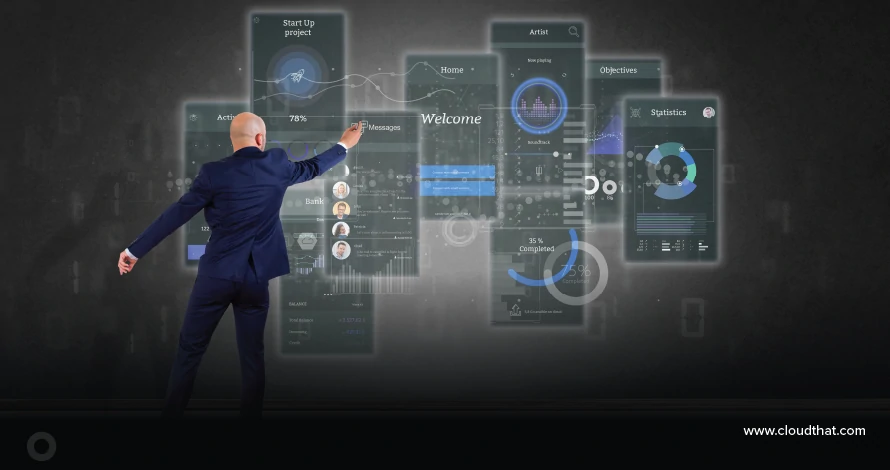|
Voiced by Amazon Polly |
Introduction
That’s where Terragrunt, a thin wrapper for Terraform, steps in. This blog will explore the key differences between Terraform and Terragrunt when to use each, and how Terragrunt simplifies Terraform usage in larger environments.
Pioneers in Cloud Consulting & Migration Services
- Reduced infrastructural costs
- Accelerated application deployment
Prerequisites
To understand the concepts discussed in this blog, you should have:
- A basic understanding of Terraform and how infrastructure is defined using HCL (HashiCorp Configuration Language).
- Experience with infrastructure deployment on AWS, Azure, or Google Cloud platforms.
- Familiarity with managing state files and Terraform modules.
- Knowledge of version control and automation practices.
Key Differences Between Terragrunt and Terraform
- Modularity and Code Reusability
- Terraform: Supports reusable modules but can get repetitive when dealing with multiple environments (e.g., dev, staging, prod). Each environment may require its configuration files, increasing duplication.
- Terragrunt: Improves reusability by allowing you to centralize environment configuration. With the terragrunt.hcl file, you can apply a single module to multiple environments without repeating the configuration.
- Managing State Files
- Terraform: Requires manual backend configuration for state management (e.g., S3 for AWS). Every module needs explicit backend configuration.
- Terragrunt: Automatically handles remote state configuration, reducing human error and allowing for a more streamlined process across all Terraform modules.
- Handling Dependencies
- Terraform: This does not support managing dependencies between different modules or environments. You have to define dependencies manually.
- Terragrunt: Supports managing dependencies between modules and environments with the dependency block, making complex infrastructure provisioning easier.
- DRY (Don’t Repeat Yourself) Principle
- Terraform: You may need to repeat configuration files for different environments, increasing redundancy.
- Terragrunt: Reduces redundancy by keeping environment-specific configurations separate from the core module logic, adhering to the DRY principle.
- Managing Multiple Environments
- Terraform: Uses workspaces to handle multiple environments, which can be limiting and sometimes error-prone in large-scale projects.
- Terragrunt: Simplifies environment management by using consistent directory structures and terragrunt.hcl files to apply the same Terraform configurations across different environments with minimal changes.
- Complexity
- Terraform: Best for smaller projects or those with fewer environments, where manual configuration isn’t too overwhelming.
- Terragrunt: Ideal for larger, more complex projects. While it introduces additional tools, it simplifies the overall management of environments, states, and dependencies.
Benefits
- Benefits of Terraform
- Cross-Platform Support: Terraform supports a wide range of cloud platforms and services.
- Modular Design: Modules allow you to reuse code across projects.
- Community and Ecosystem: Huge community support and a rich ecosystem of providers and modules.
- Benefits of Terragrunt
- State Management Simplified: Automatically configures remote state storage, reducing the chance of misconfigurations.
- Better Environment Management: Easily handle multiple environments without duplicating code.
- Dependency Handling: Built-in support for managing dependencies between different modules or environments.
- DRY Principle: Reduces redundancy by centralizing environment-specific configurations.
Conclusion
Both Terraform and Terragrunt are powerful tools for managing infrastructure. If you’re working on small to medium projects, Terraform alone should suffice. However, for larger, more complex environments where managing multiple modules, environments, and dependencies is essential, Terragrunt enhances Terraform by offering better organization, automation, and code reusability.
- Use Terraform for straightforward projects with limited complexity.
- Use Terragrunt for large-scale projects where infrastructure needs to be provisioned and managed across multiple environments and teams.
Drop a query if you have any questions regarding Terraform or Terragrunt and we will get back to you quickly.
Making IT Networks Enterprise-ready – Cloud Management Services
- Accelerated cloud migration
- End-to-end view of the cloud environment
About CloudThat
CloudThat is an award-winning company and the first in India to offer cloud training and consulting services worldwide. As a Microsoft Solutions Partner, AWS Advanced Tier Training Partner, and Google Cloud Platform Partner, CloudThat has empowered over 850,000 professionals through 600+ cloud certifications winning global recognition for its training excellence including 20 MCT Trainers in Microsoft’s Global Top 100 and an impressive 12 awards in the last 8 years. CloudThat specializes in Cloud Migration, Data Platforms, DevOps, IoT, and cutting-edge technologies like Gen AI & AI/ML. It has delivered over 500 consulting projects for 250+ organizations in 30+ countries as it continues to empower professionals and enterprises to thrive in the digital-first world.
FAQs
1. Can I use Terraform without Terragrunt?
ANS: – Yes, Terraform is a standalone tool, and you can use it without Terragrunt. However, Terragrunt offers significant enhancements to large, multi-environment projects.
2. Is Terragrunt only useful for large projects?
ANS: – Terragrunt shines in larger projects, but even smaller projects can benefit from its features, like managing remote states and reducing code duplication.

WRITTEN BY Yamini Reddy


 Login
Login


 September 11, 2024
September 11, 2024 PREV
PREV










Comments